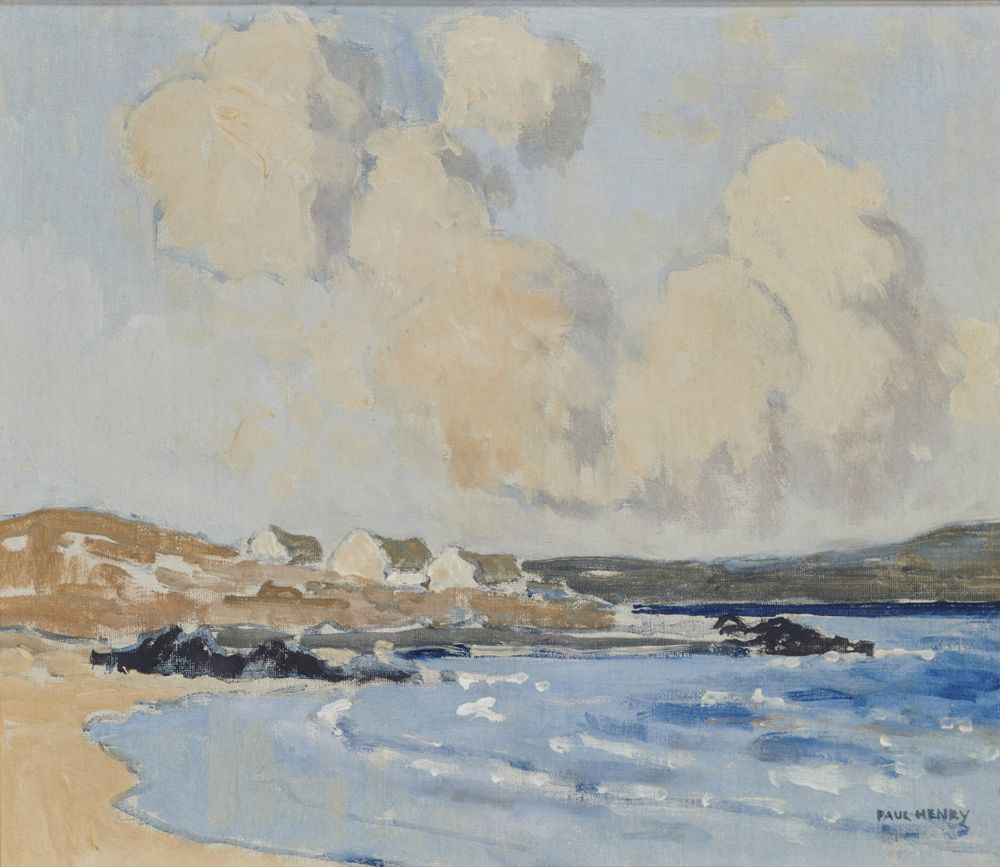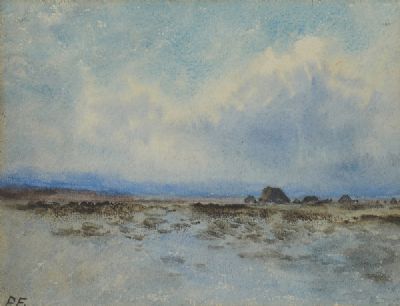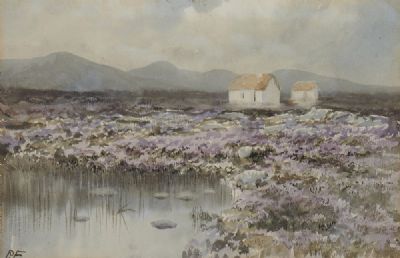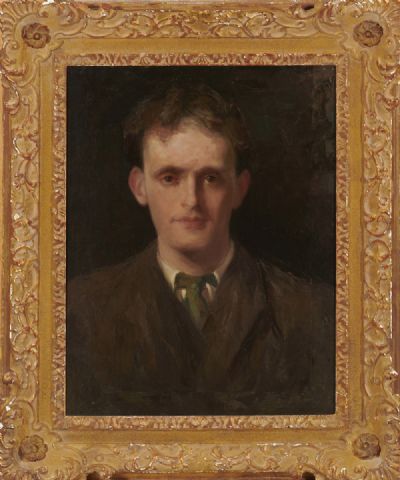Bidding on this item has ended.
Roderic O'Conor
STILL LIFE WITH A VASE OF FLOWERS AND FRUIT ON A TABLE
Lot 23
Result:
Not Sold
Estimate:
€30,000 - €50,000
Roderic O'Conor, 1860-1940
STILL LIFE WITH A VASE OF FLOWERS AND FRUIT ON A TABLE
Oil on canvas, 21 3/4" x 18" (55 x 46cm), with Atelier Stamp verso.
Provenance: Private Collection, France; Thierry Lannon, Brest.
As has been so often d...
Read more
 Lot 23
Roderic O'Conor
STILL LIFE WITH A VASE OF FLOWERS AND FRUIT ON A TABLE
Lot 23
Roderic O'Conor
STILL LIFE WITH A VASE OF FLOWERS AND FRUIT ON A TABLE
 Lot 23
Roderic O'Conor
STILL LIFE WITH A VASE OF FLOWERS AND FRUIT ON A TABLE
Lot 23
Roderic O'Conor
STILL LIFE WITH A VASE OF FLOWERS AND FRUIT ON A TABLE
Estimate:
€30,000 - €50,000
Roderic O'Conor, 1860-1940
STILL LIFE WITH A VASE OF FLOWERS AND FRUIT ON A TABLE
Oil on canvas, 21 3/4" x 18" (55 x 46cm), with Atelier Stamp verso.
Provenance: Private Collection, France; Thierry Lannon, Brest.
As has been so often documented, Roderic O'Conor was unusually prescient in anticipating key artistic movements (famously prefiguring the innovations of 'Fauve' artists such as Andre Derain and Maurice de Vlaminck) and was acutely responsive to the most exciting developments of the great masters of Post-Impressionist art. Clive Bell - who was in Paris with the artist at the time - noted that O'Conor was 'influenced by Cezanne at a time when the influence of Cezanne was not widespread'. In O'Conor's Montparnasse studio, at 102 Rue du Cherche-Midi, photographs of Cezanne's work took pride of place (alongside reproductions of El Greco) while in his vociferous discourses about art at the Chat Blanc cafe (as recorded rather unkindly by Somerset Maugham, who did not like the Irish artist) Cezanne was one of the painters whom he consistently championed at a time when he was still considered - even by progressive artists - as 'un peintre difficile'. This unassuming still-life painted in the 1920s looks back to O'Conor early admiration for Cezanne but also reveals much of his experimentation in the subsequent years.
To understand Cezanne, O'Conor wrote, required natural intuition but he was also able to engage directly with the older artist as he treasured examples of his painting in his own collection. Indeed, Cezanne has long been an 'artist's artist', collected by Gauguin, Monet, Picasso, Matisse and, more recently, Jasper Johns; O'Conor was (as so often) in good company. Cezanne's influence has been noted in relation to some of O'Conor's enigmatic 'Bathers' as well as in a small still-life Apples and Pears painted in, or about, 1893, so a couple of years before Ambrose Vollard's famous exhibition of Cezanne's work began to put him on the map. Rightly the story of the Irish artist's engagement with pictorial modernity is generally told through his contact with the art of his friend Paul Gauguin and the recently deceased Vincent van Gogh. The influence of Cezanne lay dormant for long periods while O'Conor explored colouristic fireworks in Brittany and Cassis and surface fracture, often emphasised by expressive brushstroke, became for many years of greater significance to the Irishman than Cezanne's revolutionary reconfiguration of space and structure. However, in a small group of still-lifes from the early to mid-1920s memories of Cezanne re-emerge but are infused with the formal concerns that had dominated his practice for the previous two decades to make for distinctive and original works.
O'Conor, who frequently painted still-lifes of, generally quite simple, arrangements of flowers rarely combined these with other elements such as fruit, making this a comparatively rare but particularly pleasing synthesis. Here, O'Conor uses the palette knife liberally to achieve a composition relying on a series of interrelated diagonals which balance an upturned fruit bowl with a white vase containing flowers. This juxtaposition, an artistic sleight of hand, creates a dynamism which is ultimately - and satisfactorily - resolved in an overarching pyramidal structure setting the colourful and brightly lit components of this still-life in sharp contrast with the dark background drapery.
The handling of the individual pieces of fruit in their robust, volumetric presence nods to Cezanne - as does the abandonment of traditional perspectival recession. The tilted basket allowing for a different viewpoint - from above - is a signature of Cezanne's still-life art. However, the flowers in a vase which accompany this mini hommage à Cezanne on the left owe little to the older French artist and form an exuberantly joyful floral still-life of the sort in which he specialised around this date. If here O'Conor seems to agree with Cezanne's advice (in a famous letter to Emile Bernard of April 1904) to 'treat nature by means of the cylinder, the sphere, the cone, everything brought into proper perspective so that each side of an object or a plane is directed toward a central point', he differs from the great master's dictum, expressed in the same letter, that 'nature..is more depth than surface'.
A larger instance of a similar combination of fruit and floral elements occurs in Le Compotier of 1919 where, as with the present work, the 'use of near primary colours in close proximity gives an almost iridescent glow' (Roy Johnston, Roderic O'Conor, 1860-1940 (London, 1985, p. 69). However, the picture dates from a few years later and is closest perhaps to Still Life of Fruit and Flowers of 1924 (Sotheby's 18 May 2001).
STILL LIFE WITH A VASE OF FLOWERS AND FRUIT ON A TABLE
Oil on canvas, 21 3/4" x 18" (55 x 46cm), with Atelier Stamp verso.
Provenance: Private Collection, France; Thierry Lannon, Brest.
As has been so often documented, Roderic O'Conor was unusually prescient in anticipating key artistic movements (famously prefiguring the innovations of 'Fauve' artists such as Andre Derain and Maurice de Vlaminck) and was acutely responsive to the most exciting developments of the great masters of Post-Impressionist art. Clive Bell - who was in Paris with the artist at the time - noted that O'Conor was 'influenced by Cezanne at a time when the influence of Cezanne was not widespread'. In O'Conor's Montparnasse studio, at 102 Rue du Cherche-Midi, photographs of Cezanne's work took pride of place (alongside reproductions of El Greco) while in his vociferous discourses about art at the Chat Blanc cafe (as recorded rather unkindly by Somerset Maugham, who did not like the Irish artist) Cezanne was one of the painters whom he consistently championed at a time when he was still considered - even by progressive artists - as 'un peintre difficile'. This unassuming still-life painted in the 1920s looks back to O'Conor early admiration for Cezanne but also reveals much of his experimentation in the subsequent years.
To understand Cezanne, O'Conor wrote, required natural intuition but he was also able to engage directly with the older artist as he treasured examples of his painting in his own collection. Indeed, Cezanne has long been an 'artist's artist', collected by Gauguin, Monet, Picasso, Matisse and, more recently, Jasper Johns; O'Conor was (as so often) in good company. Cezanne's influence has been noted in relation to some of O'Conor's enigmatic 'Bathers' as well as in a small still-life Apples and Pears painted in, or about, 1893, so a couple of years before Ambrose Vollard's famous exhibition of Cezanne's work began to put him on the map. Rightly the story of the Irish artist's engagement with pictorial modernity is generally told through his contact with the art of his friend Paul Gauguin and the recently deceased Vincent van Gogh. The influence of Cezanne lay dormant for long periods while O'Conor explored colouristic fireworks in Brittany and Cassis and surface fracture, often emphasised by expressive brushstroke, became for many years of greater significance to the Irishman than Cezanne's revolutionary reconfiguration of space and structure. However, in a small group of still-lifes from the early to mid-1920s memories of Cezanne re-emerge but are infused with the formal concerns that had dominated his practice for the previous two decades to make for distinctive and original works.
O'Conor, who frequently painted still-lifes of, generally quite simple, arrangements of flowers rarely combined these with other elements such as fruit, making this a comparatively rare but particularly pleasing synthesis. Here, O'Conor uses the palette knife liberally to achieve a composition relying on a series of interrelated diagonals which balance an upturned fruit bowl with a white vase containing flowers. This juxtaposition, an artistic sleight of hand, creates a dynamism which is ultimately - and satisfactorily - resolved in an overarching pyramidal structure setting the colourful and brightly lit components of this still-life in sharp contrast with the dark background drapery.
The handling of the individual pieces of fruit in their robust, volumetric presence nods to Cezanne - as does the abandonment of traditional perspectival recession. The tilted basket allowing for a different viewpoint - from above - is a signature of Cezanne's still-life art. However, the flowers in a vase which accompany this mini hommage à Cezanne on the left owe little to the older French artist and form an exuberantly joyful floral still-life of the sort in which he specialised around this date. If here O'Conor seems to agree with Cezanne's advice (in a famous letter to Emile Bernard of April 1904) to 'treat nature by means of the cylinder, the sphere, the cone, everything brought into proper perspective so that each side of an object or a plane is directed toward a central point', he differs from the great master's dictum, expressed in the same letter, that 'nature..is more depth than surface'.
A larger instance of a similar combination of fruit and floral elements occurs in Le Compotier of 1919 where, as with the present work, the 'use of near primary colours in close proximity gives an almost iridescent glow' (Roy Johnston, Roderic O'Conor, 1860-1940 (London, 1985, p. 69). However, the picture dates from a few years later and is closest perhaps to Still Life of Fruit and Flowers of 1924 (Sotheby's 18 May 2001).
- Enquire
- View all lots by this artist
- How bidding works
Please note: You will require a deVeres account in order to bid. Please register via the website. Each lot will close numerically. If there is late bidding the time may be extended which could delay subsequent lots. The lots will start to close from 2.00pm on auction day, closing at 45 second intervals.
PLEASE BID EARLY TO AVOID DISAPPOINTMENT.
In order to allow rival bidders the opportunity to respond to a late bid the following extensions will apply:
IF A BID IS RECEIVED WITHIN THE FINAL 45 SECONDS OF THE COUNTDOWN THE CLOCK WILL RESET TO 60 SECONDS.
At any point you can leave a maximum bid, representing the highest price you are prepared to pay for a particular lot. Bidding only advances when there is competition from a rival bidder. In that case the system bids on your behalf, only up to the maximum if required. All bids are relayed to you be email, along with notification if you have been outbid.
All maximum bids are confidential and not disclosed. The system will endeavor to purchase the lot for you for the least price. Bids are subject to buyer’s premium of 25% (incl vat), with no additional charges.
In the event of a tied bid, the preference will be given to the bid submitted first. The second bidder will receive immediate notification of being outbid.
PLEASE BID EARLY TO AVOID DISAPPOINTMENT.
In order to allow rival bidders the opportunity to respond to a late bid the following extensions will apply:
IF A BID IS RECEIVED WITHIN THE FINAL 45 SECONDS OF THE COUNTDOWN THE CLOCK WILL RESET TO 60 SECONDS.
At any point you can leave a maximum bid, representing the highest price you are prepared to pay for a particular lot. Bidding only advances when there is competition from a rival bidder. In that case the system bids on your behalf, only up to the maximum if required. All bids are relayed to you be email, along with notification if you have been outbid.
All maximum bids are confidential and not disclosed. The system will endeavor to purchase the lot for you for the least price. Bids are subject to buyer’s premium of 25% (incl vat), with no additional charges.
In the event of a tied bid, the preference will be given to the bid submitted first. The second bidder will receive immediate notification of being outbid.
Sign-up to our auction alert
Signup for personalised Irish art recommendations, invitations to viewings and auctions, articles and more.

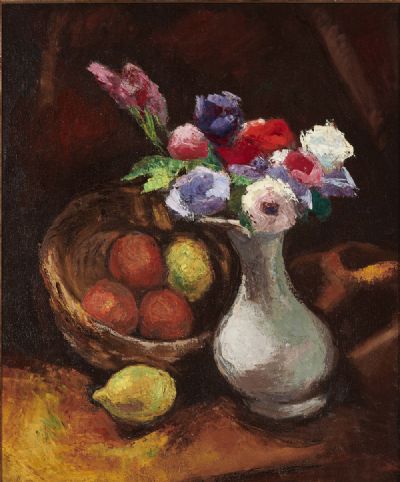
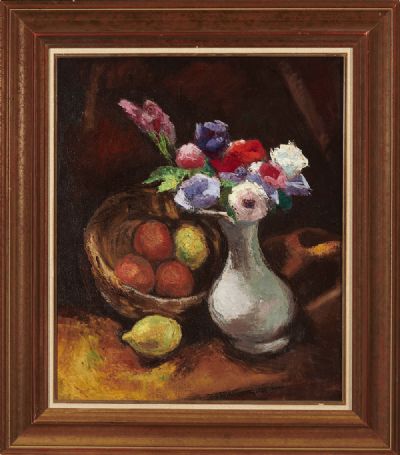
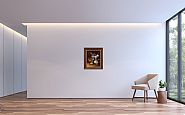
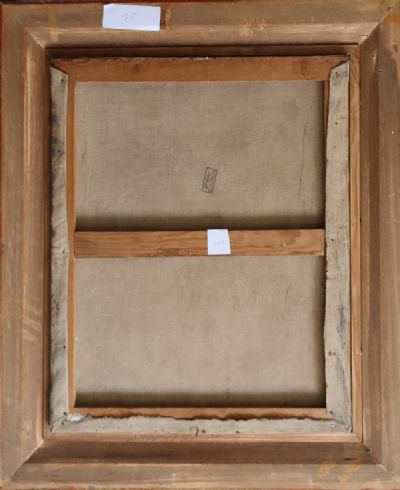
 View More Videos
View More Videos DVTV Click Here To View Video
DVTV Click Here To View Video